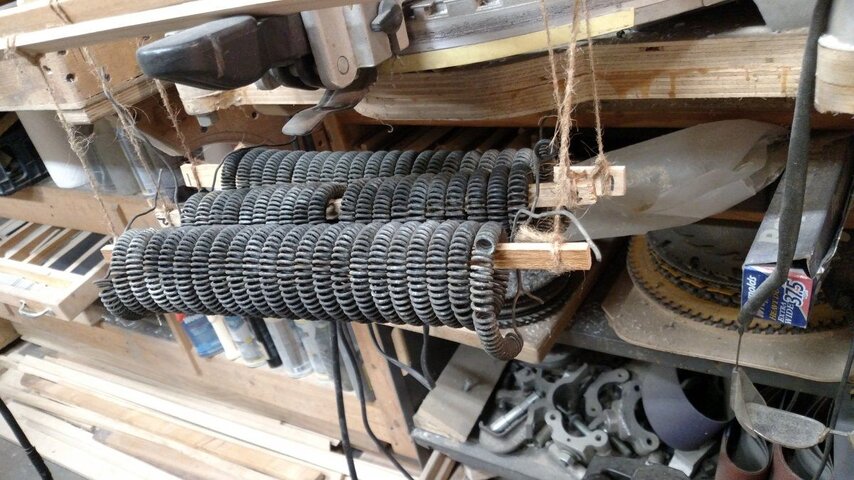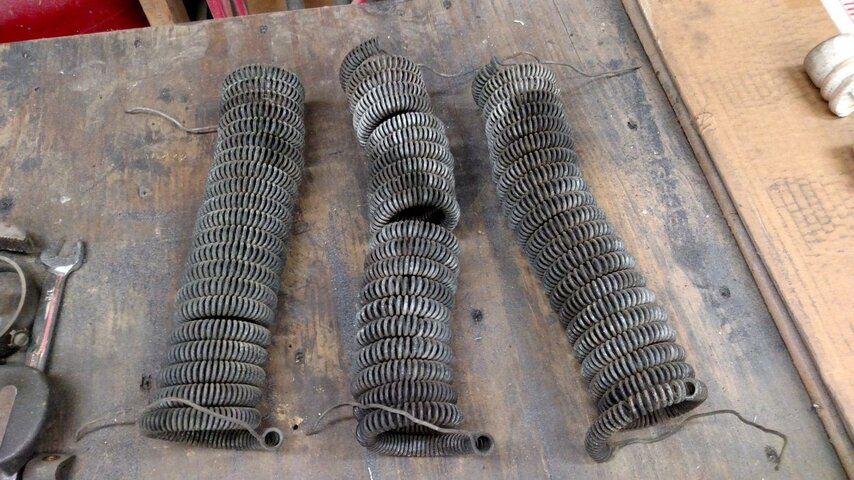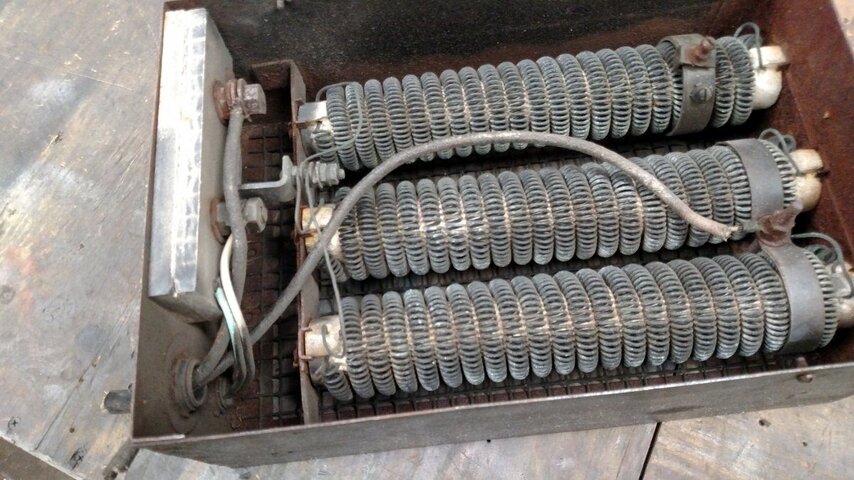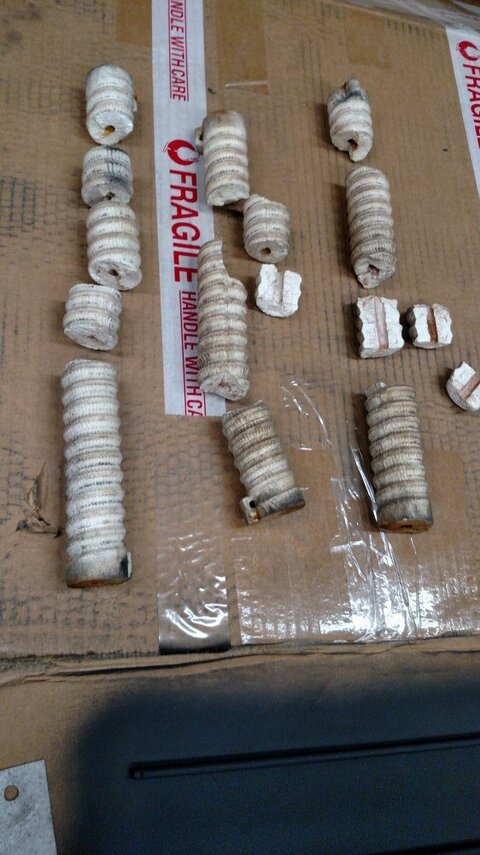So the ceramic cores to these copper spring resisters were too badly damaged to just epoxy back together. This fixture got dropped in destroying both the casters (TBD separate project & just as interesting in unique casters) and the ceramic support for the heater resistance as it were for sustaining the arc. Have the ceramic glue, but waiting on McMaster to special order the bonding agent recommended from spec. to properly glue back together these parts of the resistor core support. It's over a hundred years old and too fragile to thoroughly clean the broken parts. Bonding agent will be needed before doing I'm thinking at this point, Cotronics Resbond #940LE I have a lot of experience working with to glue the parts back together with. The other choice was #907, have a can but years since, it's solid now. Can't see buying another given the other in two part is still fresh and will work.
In the mean time in not starting the light fixture itself yet, I have time to work on the core winding - especially while waiting on a replacement cover for the ballast to be welded up. Took well over an hour to sand blast the housing for this ballast, than more hours to cut 1" 16ga box tubing into angle iron so as to make a cover. Why cut box tubing into angle iron? Because normal steel angle iron would be rounded over on the concave side and not work. Waiting to get the original box back with new cover from the welding shop.
Tarnex... You can see how oxidized and heat burnt etc. these copper coils are in the photos. This has to add resistance to heat dissipation, if not given the skin effect of current flow, resistance to current flow which would not help either. For bling factor and current flow, given I cannot re-produce the coiled springs of the resistors... I'm going to try to dip them in Tarnex. Following the instructions... a plastic or stainless mudding tray for both the chemical and one or more for water rinse after, than a hanging rack to drip dry. The aluminum turkey pan I bought today would be bad. Alternate and perhaps for the water in having more volume is a plastic try to dunk in for water is to use a plastic tub for more volume on at least the last dip.
Pre-tried oven cleaner and lime away/CLR in areas & did nothing.
So, prepping to try this... any final words electrically before the Tarnex does it's thing, rinsing twice, than spraying to drip dry with electrical contact cleaner with lubricant? Thoughts our concerns? Think this will help electrically. Note coil in the center looks like it's broken but it's just the photo and a gap in how the coils are hung.
In the mean time in not starting the light fixture itself yet, I have time to work on the core winding - especially while waiting on a replacement cover for the ballast to be welded up. Took well over an hour to sand blast the housing for this ballast, than more hours to cut 1" 16ga box tubing into angle iron so as to make a cover. Why cut box tubing into angle iron? Because normal steel angle iron would be rounded over on the concave side and not work. Waiting to get the original box back with new cover from the welding shop.
Tarnex... You can see how oxidized and heat burnt etc. these copper coils are in the photos. This has to add resistance to heat dissipation, if not given the skin effect of current flow, resistance to current flow which would not help either. For bling factor and current flow, given I cannot re-produce the coiled springs of the resistors... I'm going to try to dip them in Tarnex. Following the instructions... a plastic or stainless mudding tray for both the chemical and one or more for water rinse after, than a hanging rack to drip dry. The aluminum turkey pan I bought today would be bad. Alternate and perhaps for the water in having more volume is a plastic try to dunk in for water is to use a plastic tub for more volume on at least the last dip.
Pre-tried oven cleaner and lime away/CLR in areas & did nothing.
So, prepping to try this... any final words electrically before the Tarnex does it's thing, rinsing twice, than spraying to drip dry with electrical contact cleaner with lubricant? Thoughts our concerns? Think this will help electrically. Note coil in the center looks like it's broken but it's just the photo and a gap in how the coils are hung.
Attachments
Last edited:






